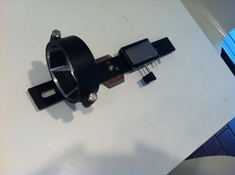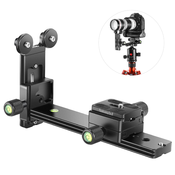ant! - In terms of bigger cameras or especially long teles, I always go "headless". My father taught me with his old brass transit and set of maple hardwood legs; and surveyors were expected to align things far more accurately than photographers, using leg adjustments only. But with smaller cameras, including my P67 with up to a 200 mm tele, I do use an old solid Gitzo pan-tilt head atop their first CF tripod, which has about the same mass as that Leofoto one you cited.
The 300EDIF tele is in a whole different weight and size category. But it comes with la lens collar mount, which not only balances the whole set at the midpoint of its weight, but allows the camera to be easily rotated vertical or horizontal, or anywhere in between. Therefore any intermediate tripod head would be entirely redundant, as well as the weak link in the entire system in terms of stability. And for the 300 EDIF with its lens collar, I can even get sufficient stability using my lighter weight Ries wooden tripod, or my bigger carbon fiber one - a Feisol CT3472 (about 6 lbs), which I have modified to platform-only attachment.
Incidentally, Feisol offers an optional "half-ball" device for this model and a few others, which seats in a scooped-out bowl in the top, and is far more stable than any full ball head reliant on a stem (the vibration weak link). I don't have one of those; but they look like a logical alternative to regular tripod heads unless one needs to point the camera straight down. I can do that, if necessary, with a simple tapped angle brace instead, at a fraction the weight and cost of any typical head.
Remember, so-called weight ratings for tripods are "dead-weight" only, just like a ladder. A class 1 rated later might hold up to a 250 lb man, but sure might not do so safely or securely, as hundred of serious accidents prove every year! Even a math dummy like me learned how to calculate torque vectors in Physics class. And a long lens is just like a torque wrench or "cheater bar", and greatly increases the stress on tripod stability. Plus those advertised weight rating are basically BS anyway when it comes to real-world applications.
As far as shutter vibration goes, even with my P67 that's not an issue. The infamous mirror slap certainly is; but that's what the mirror-lock-up feature is for. But since at 1/60th or above speeds, the shutter completes it action before the mirror hits, it's only below that speed it's a potential risk, and that lockup is potentially needed. The P645 should be quite a bit gentler in that respect;
but NOT if you have a wimpy tripod!




